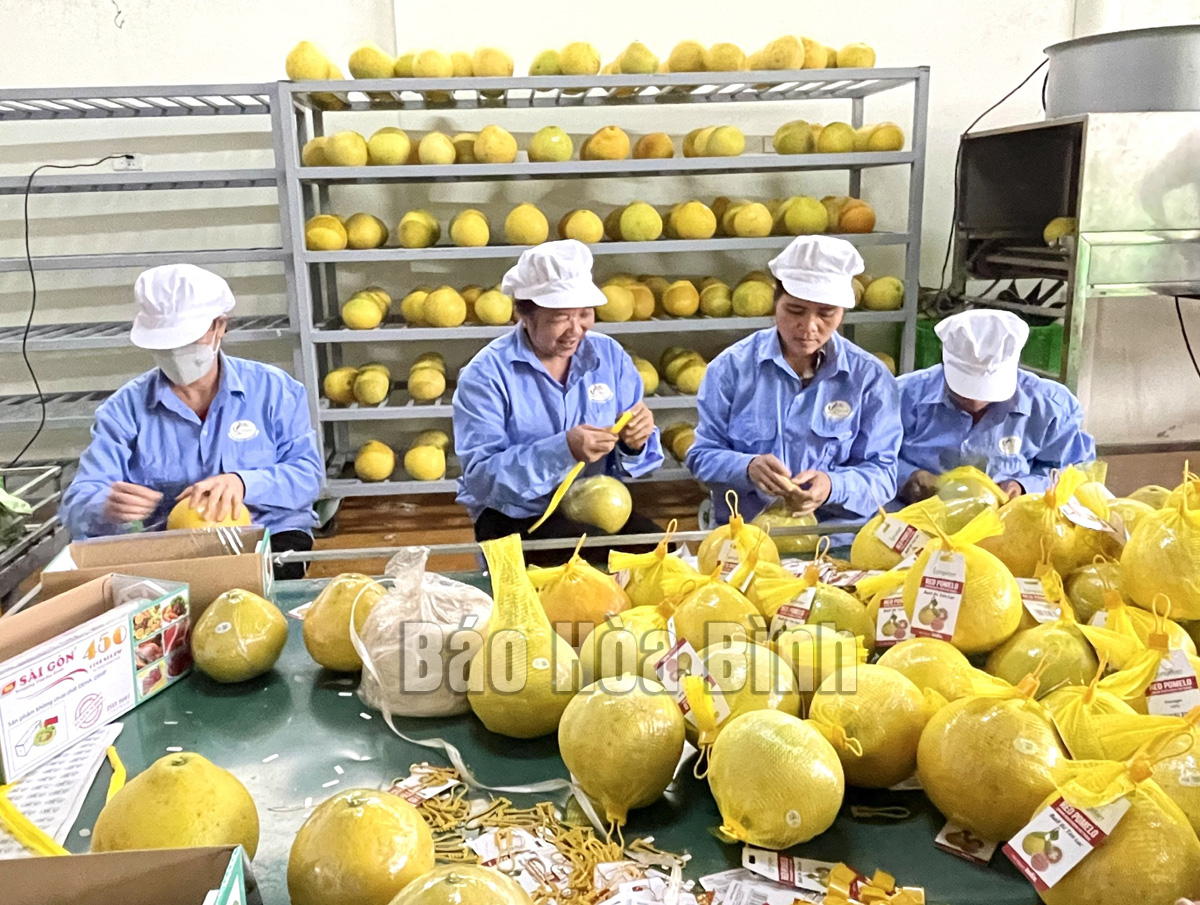
(HBO) – On the first days of 2023, the first batch of Cao Phong orange was exported to the UK, following the successes obtained in 2022. This year, agricultural exports are expected to post strong growth, helping local agriculture improve added value and develop sustainably.
The cultivation techniques of the Tan Lac red-flesh
pomelo have been improved to meet strict standards, thus successfully entering
the British market.
In 2022, departments, sectors, and localities in
Hoa Binh province applied themselves to promoting safe farming, forming cash
crop production zones, helping with the recognition of good agricultural
practices (GAP), stepping the granting and monitoring of production and
packaging unit codes, linking processing businesses with concentrated farming
zones, and connecting supply and demand to boost sales in the domestic and
foreign markets.
Authorities also issued mechanisms and policies
for assisting farmers, businesses, and cooperatives to boost agricultural
production, improve product quality, and expand the market.
In 2022, 14 businesses, cooperatives, and
cooperative groups (up 75% from 2021) exported farm produce to markets
including China, Taiwan, Japan, Australia, the Republic of Korea, the EU, the
Netherlands, and Germany. Products made from cereal, vegetables, fruit, bamboo
shoots, cassava, and other fresh produce were shipped abroad, bringing home
518.65 billion VND (over 22.1 million USD), surging 103.92% year on year.
So far, 147 crop, animal, and aquatic farming
establishments in the province have been helped to earn VietGAP, GlobalGAP, and
organic certification.
Nguyen Huy Nhuan, Director of the provincial
Department of Agriculture and Rural Development, said the sharp rise in the
number of agricultural and forestry product exporters in 2022 was a
prerequisite for export in the coming years.
To bring into play the achievements in 2022 and
bolster the export of key agricultural and forestry products, agricultural
authorities will keep coordinating with relevant sectors and agencies to carry
out concerted measures, he noted.
Focus will be placed on developing concentrated
farming in connection with the processing industry and the market; stepping up
the development, transfer, and application of scientific and technological
advances, especially cutting-edge technology and solutions; increasing
investment attraction to agriculture and rural development; and implementing
policies to help grant production and packaging unit codes, according to the
official./.
According to data from the Hoa Binh Provincial Party Committee, the industrial production index for the first six months of 2025 is estimated to have increased by 20% compared to the same period last year. This marks the highest year-on-year growth rate for this period since 2020.
In the first six months of 2025, Hoa Binh province’s export turnover was estimated at 1.145 billion USD, marking an 18.11% increase compared to the same period in 2024. Import turnover was estimated at $ 804 million, a 17.15% increase, which helped the province maintain a positive trade balance.
The lives of the ethnic minority farmers in Tan Lac district have gradually improved thanks to the new directions in agricultural production. This is a testament to the collective strength fostered through the professional associations and groups implemented by various levels of the district’s Farmers’ Union.
With the motto the "product quality comes first,” after nearly one year of establishment and operation, Muong village’s Clean Food Agricultural and Commercial Cooperative, located in Cau Hamlet, Hung Son Commune (Kim Boi district), has launched reputable, high-quality agricultural products to the market that are well-received by consumers. The products such as Muong village’s pork sausage, salt-cured chicken, and salt-cured pork hocks have gradually carved out a place in the market and they are on the path to obtaining the OCOP certification.
In the past, the phrase "bumper harvest, rock-bottom prices" was a familiar refrain for Vietnamese farmers engaged in fragmented, small-scale agriculture. But today, a new spirit is emerging across rural areas of Hoa Binh province - one of collaboration, organisation, and collective economic models that provide a stable foundation for production.
Maintaining growing area codes and packing facility codes in accordance with regulations is a mandatory requirement for agricultural products to be eligible for export. Recently, the Department of Agriculture and Environment of Hoa Binh province has intensified technical supervision of designated farming areas and packing facilities to safeguard the "green passport" that enables its products to access international markets.



